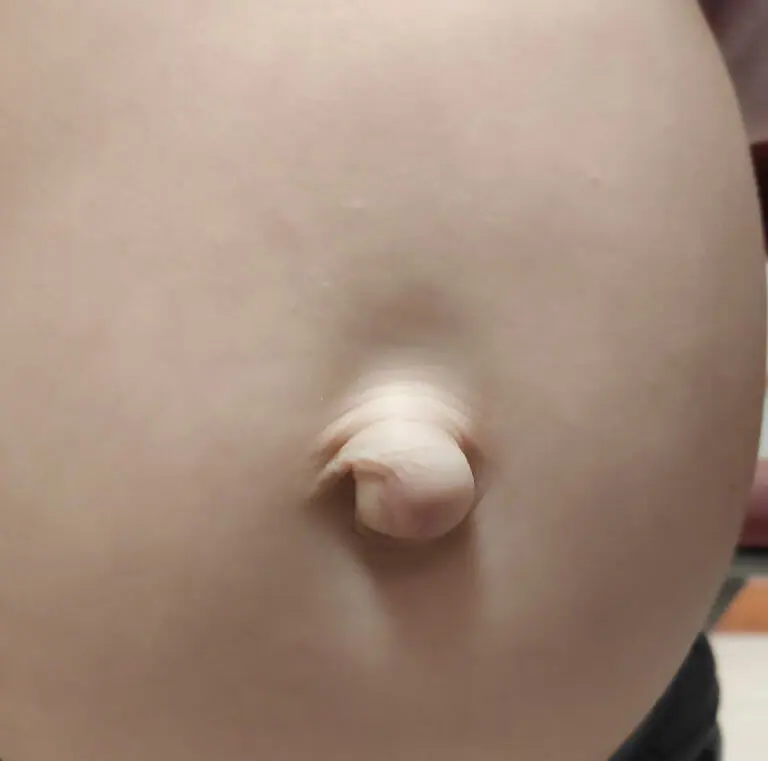
Umbilical hernia in babies and children
Umbilical hernia are a common finding in children. As a pediatrician, I encounter umbilical hernia often on physical exam of a baby, following the falling off of the umbilical cord, when a small bulge becomes visible in the area.
This excellent chapter was written by Professor Naftali Freud, and it contains the answers to all your questions. Professor Freud is a leading pediatric surgeon, and he is on our list of recommended physicians by Dr Efi.
What is the umbilical cord or belly button, as it is commonly referred to?
The meaning behind umbilicus is middle or central.
So, let’s get to the central part of this chapter.
What is an umbilical hernia?
A hernia is in fact a bulging of an organ through a weaker surface/a defect in the abdominal wall. When it comes to umbilical hernias – it is a bulging through the umbilicus.
To learn about inguinal hernias and hydroceles in children, where the hernia goes through the inguinal canal, refer to the following link.
How common are umbilical hernia in babies and children?
The prevalence of umbilical hernia during birth in preterm babies can reach up to 84%, and in those babies born term it is approximately 20.5%. This prevalence is reduced to about 2-10% at the age of 1, and in most cases the umbilical hernia will close up on its own by the age of 4 years. just by reading these statistics one can understand, already at an early stage, that the vast majority of umbilical hernias resolve spontaneously, without any surgical assistance.
How do umbilical hernias develop?
During the fourth week of pregnancy, the fetus’ umbilical ring develops. The umbilical cord, that connect the fetus to the mother’s placenta, passes through this ring. The umbilical cord contains two arteries and one vein and it gives the blood supply needed for the fetus to grow and develop until birth. The umbilical cord enters the baby’s body through the umbilical ring which lies between two straight abdominal muscles (the muscles that form the “abs” that we like to train). These muscles are connected to one another by a strong fibrous tissue called the linea alba.
After birth, a natural process occurs in which all the blood vessels become blocked (because there is no longer a need for blood supply from the placenta), the umbilical stump dried up, the umbilical ring closes up and the linea alba turns into one consistent and smooth band. This is how the abdominal wall closes up and the abdominal cavity becomes sealed from the outside world.
If the area of the umbilical ring does not close up and heal as expected, a part of the abdominal wall will remain open and covered with skin only. And that is how that same area that is covered by skin only allows the organs of the abdomen to bulge out. This is how a congenital umbilical hernia develops.
What does the umbilical hernia contain?
Depending on the size of the opening, mobile abdominal organs (mainly intestines and/or fat) can pass through it and form the characteristic bulging of the umbilicus, which in most cases is the characteristic sign of the hernia. When the intrabdominal pressure rises, for example during crying, coughing or sneezing, the umbilicus becomes swollen and filled with the organs that go through it.
Does an umbilical hernia indicate a problem with the way the umbilical cord was cut?
This is a question I get asked often. The answer is an absolute no!. An umbilical hernia is a ‘failure’ of the natural process of healing of the umbilical ring.
How can you estimate the size of the umbilical hernia?
The size of the hernia is determined by the diameter of the opening of the muscle in the abdominal wall, and not the amount of bulging that can be seen. And why is that? Because the diameter of the opening is the important parameter for follow up and prediction of whether the hernia will resolve spontaneously.
Is there a chance that the hernia will resolve spontaneously as the child grows or do all children require surgical intervention?
The chances that the hernia will resolve spontaneously depends on the child’s age and the size of the hernia. For example, in a baby with an umbilical hernia that is smaller than 1 cm in diameter, we can assume that there is more than a 70% chance that the hernia will resolve spontaneously as the child grows and develops. This is different to a 3 year old child with an umbilical hernia that is 2 cm in diameter, where the chances of spontaneous resolution are slim. An additional important parameter one must take into consideration when assessing the hernia is whether there have been any changes indicating resolution during the follow-up period. Most umbilical hernias will resolve by the age of 4, that is why it is common to wait until that age before deciding whether surgery is needed. If it seems like the hernia is resolving spontaneously, we often wait even past the age of 4 and avoid surgery. There are reports of spontaneous resolution even up to the age of 11 years, but this only happens in a small percentage of cases. In children where the umbilical hernia does not resolve and becomes a social nuisance, and causes children to develop mental and behavioural disorders, a surgery will help solve the problem.
Another problem that is important to keep in mind is that the approach to umbilical hernias, especially in those that are borderline in size, is different between boys and girls. The possibility of future pregnancies in women (which could naturally worsen the umbilical hernia) is a factor that must be taken into consideration when trying to decide whether or not to perform surgery on a hernia that is borderline large.
In children with umbilical hernias that underwent spontaneous resolution, the excess skin may shrink but remain prominent, despite closure of the hernia. In this group of children, a small cosmetic surgery may be needed and because it is merely cosmetic, it is often better to delay the decision on such surgery to adolescence.
How are umbilical hernias surgically corrected?
This is a short surgery that is performed in ambulatory settings, under general anesthesia. In addition, local anesthesia is also administered (anesthesia is injected into the area of the surgery) in order to provide relief during the first few hours following surgery. The surgery is performed in an open approach, by incising the abdominal wall, below or above the umbilicus.
The surgery mainly closes the umbilical ring that failed to close naturally, with the help of stitches. The excess skin is pulled back into the abdominal wall as much as possible, to give a similar appearance to the umbilicus. It is important to emphasize that it is impossible to create the appearance of an umbilicus that was never herniated, especially in very skinny children with thin abdomens.
The surgery ends with a cosmetic stitch on the skin that does not require future removal. In children there is no need to use any nets.
The recovery from the surgery is usually quick and easy. One must avoid physical exercise (sports, riding a bike, other physical exercise) for 4 weeks.
In summary, this is a very common condition in children that requires follow up by a skilled pediatric surgeon. I recommend you consult with a pediatric surgeon for an assessment and monitoring and decide together with them for the need of surgical management, especially if your child has reached the age of 4 and continues to have significant hernia that has not been improving int the past year.
For comments and questions, please register
